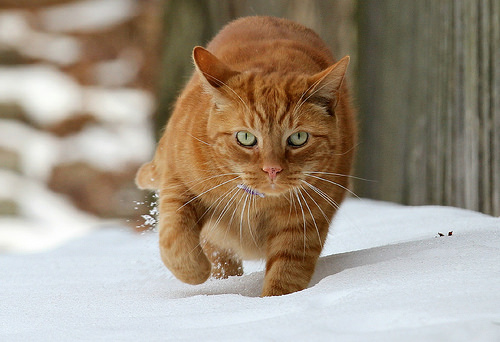If the temperature drops far enough this winter, your cat could be at risk of developing hypothermia. This can potentially be fatal, especially if it is not promptly treated. Here’s what you need to know to protect your cat from the dangers, plus some tips on what to expect if your cat is affected.
How Hypothermia in Cats Occurs
Being exposed to cold air is the most common cause of hypothermia, especially if your cat’s fur is also wet. Cold water can also trigger hypothermia if exposure happens for long enough. Other causes can include shock, toxic shock, malnutrition and conditions that affects the part of the brain that regulates body temperature.
Preventing Hypothermia
As far as possible, look to limit or prevent your cat’s exposure to cold and rain. If this is not possible, make sure that they have an area in which there is complete shelter from the elements. While any cat can be affected, kittens are particularly vulnerable to developing hypothermia and should be kept indoors during bad weather to protect them.
Symptoms of Hypothermia
The symptoms of hypothermia start to occur when body temperature falls too low. Shivering is one of the main initial symptoms as the body tries to get warm. As body temperature continues to decrease, heart rate and breathing will slow down. Without treatment, affected cats will go into a coma and death becomes likely. Other signs of hypothermia can include lethargy, drowsiness, skin that feels cold and clammy and decreased temperature.
Treatment for Hypothermia
If hypothermia is suspected, contact your vet as soon as possible. Treatment needs to be given as soon as possible to improve recovery chances so time is of the essence. In the meantime, move your cat to a warmer area. If they are wet, towel dry them and keep them wrapped up in warm towels or blankets. Hot water bottles can also work well in raising body temperature but be careful that it is not too warm. Once at the vet, diagnosis will take place. Exposure to the cold is not the only possible cause of low body temperature so your vet will want to make sure that there are no other factors at fault. Mild hypothermia is usually treated by raising body temperature to a normal level through external methods. In moderate to severe cases, warmed IV fluids or a warm water enema may be used to warm from the inside out. Once body temperature has returned to normal, your cat should make a good recovery. It is recommended that you monitor them for a few days afterwards to make sure and to go back to your vet if you have any cause for concern.
[Photo Credit: Kerri Lee Smith]
